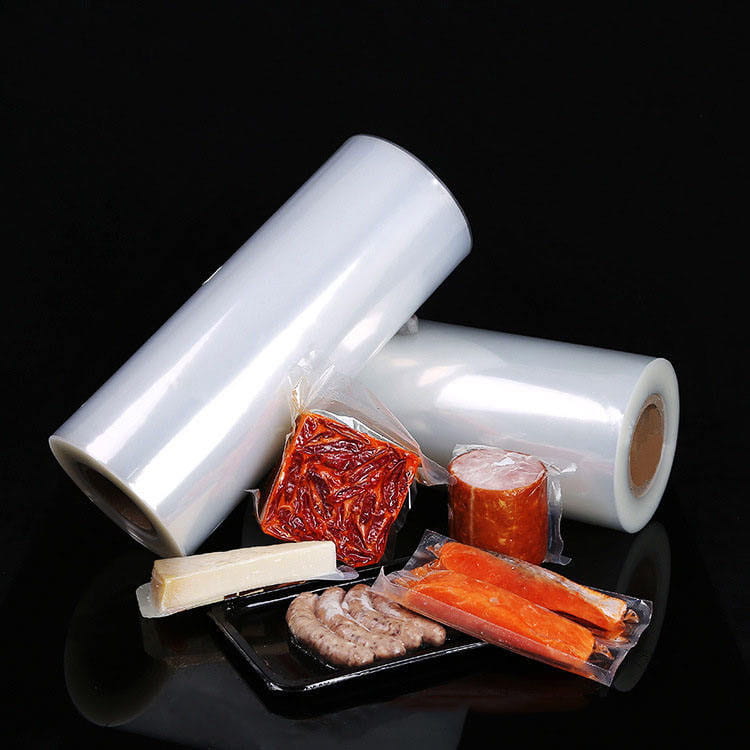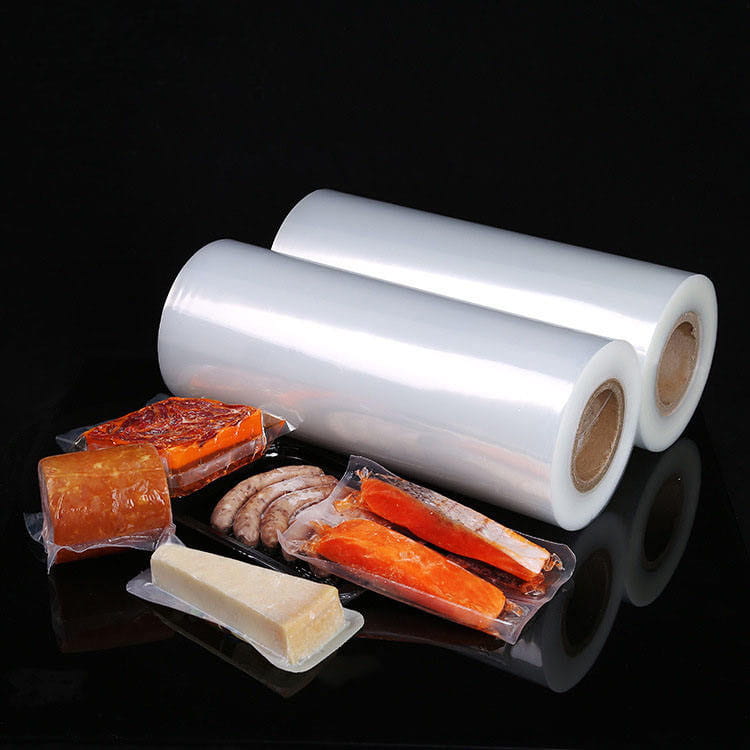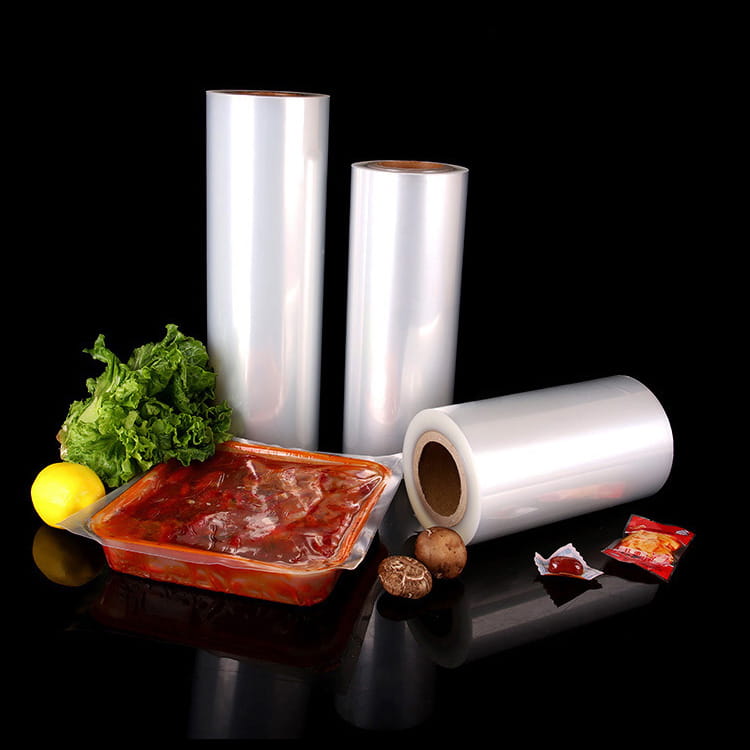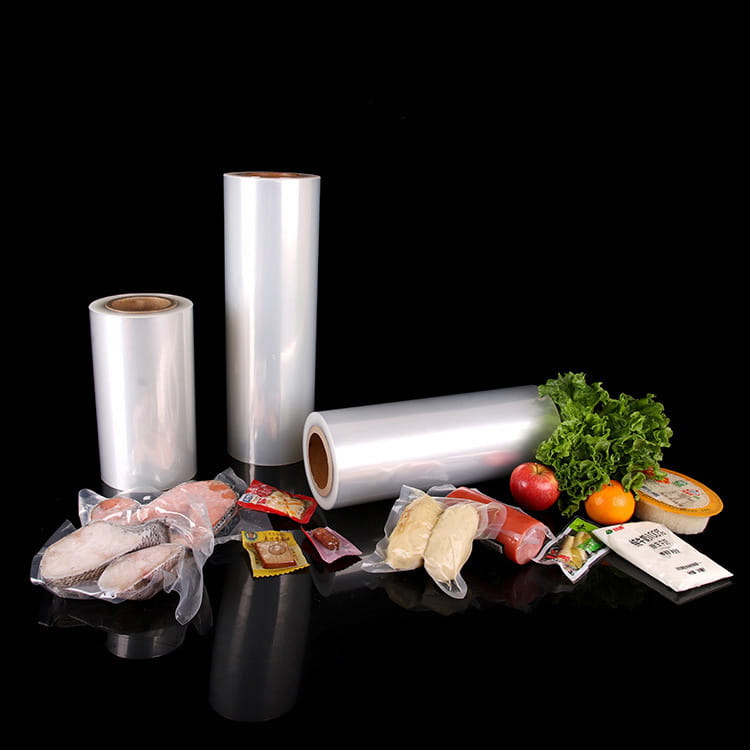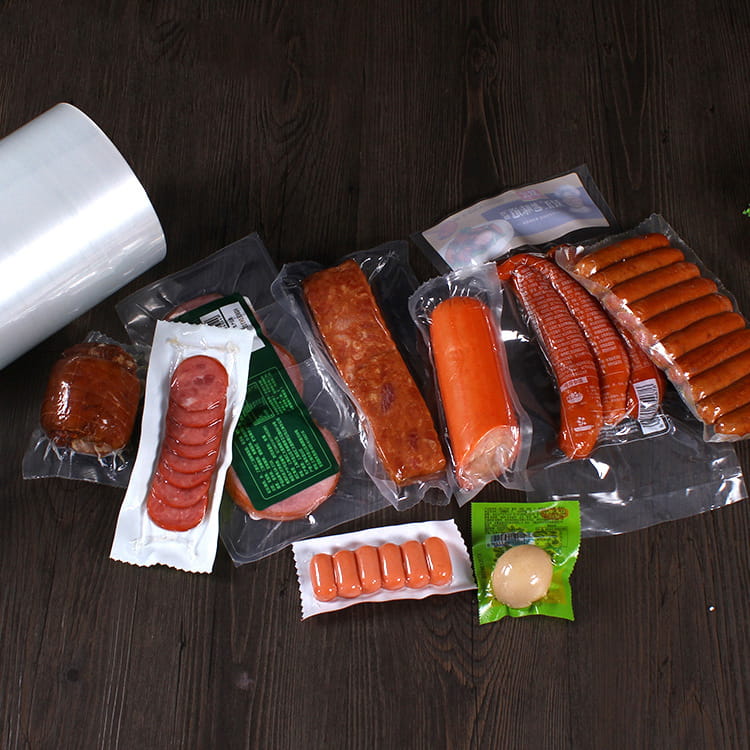The composite printed film is made of multiple layers of materials through adhesives or co-extrusion processes. Its structure usually includes a substrate layer (such as PET, BOPP), a barrier layer (such as aluminum foil, EVOH) and a heat-sealing layer. The heat-sealing layer is located in the innermost layer and is in direct contact with the contents. Its core function is to form a reliable sealing interface through the heat-sealing process.
This function seems simple, but it actually needs to balance multiple contradictions:
The game between low temperature and high temperature: it must be able to quickly heat-seal at low temperatures to adapt to high-speed production lines, and it must remain stable in high-temperature environments to resist sterilization treatment;
The balance between flexibility and rigidity: it must be soft to fit the shape of the package, and it must be tough enough to resist extrusion and puncture during transportation;
The coordination of transparency and barrier: it must ensure the visual appeal of the package, and effectively block external factors such as oxygen and moisture.
The performance defects of the heat seal layer may directly lead to packaging failure:
Insufficient heat seal strength causes leakage, resulting in loss or contamination of contents;
Aging of the heat seal layer leads to delamination, which destroys the barrier properties;
Uneven heat seals produce weak points, reducing the impact resistance of the package.
The performance of the heat seal layer is not a single indicator, but a complex system determined by material properties, processing technology and environmental adaptability. The following are four core dimensions:
Low-temperature heat sealability is the lifeline of high-speed packaging production lines. Taking cast polypropylene (CPP) as an example, its heat seal temperature is usually 20-30℃ lower than that of traditional polyethylene (PE), which means lower equipment energy consumption and shorter heat seal time (can be shortened to less than 0.5 seconds), thereby significantly improving production efficiency.
The realization of low-temperature heat sealability depends on the molecular structure design of the material:
Molecular weight distribution: CPP with narrow molecular weight distribution has a lower melting point, but it is necessary to balance heat seal strength and toughness through blending technology;
Additive selection: The addition of plasticizers such as polybutene (PB) can reduce the melting point, but the amount of addition needs to be controlled to avoid affecting barrier properties.
For foods that require high temperature sterilization (such as canned food, instant meal packs) or medicines (such as injections), the heat seal layer needs to withstand cooking temperatures of 121°C or even higher. Modified polyethylene (PE) uses blending technology (such as adding ethylene-vinyl acetate copolymer EVA or ethylene-acrylic acid copolymer EAA) to increase the melting point to above 140°C while maintaining the heat seal strength.
The key to high temperature stability lies in the thermal oxidation stability of the material:
The addition of antioxidants can delay the degradation of the material at high temperatures;
The formation of cross-linked structures (such as through radiation cross-linking) can improve the heat resistance of the material.
The uniformity of the heat seal layer directly affects the sealing integrity of the package. The film thickness deviation must be controlled within ±5%, otherwise it is easy to cause local overheating or poor sealing. In the composite process, the film thickness is monitored in real time by an online thickness gauge, and the extrusion amount is adjusted using a closed-loop control system to ensure the consistency of the heat seal layer thickness.
The destruction of uniformity may be caused by:
Raw material fluctuations: such as uneven distribution of polymer molecular weight;
Processing parameter deviations: such as inconsistent extrusion temperature and cooling speed;
Transportation and storage conditions: such as high temperature and high humidity environment causing material moisture absorption or crystallization.
Heat seal strength is the core indicator for measuring sealing reliability. The requirements for heat seal strength in different application scenarios vary significantly:
Ordinary food packaging: needs to withstand vibration and extrusion during transportation to prevent leakage of contents;
Drug packaging: needs to resist needle puncture to ensure sterile isolation;
Industrial product packaging: needs to withstand heavy objects stacking to prevent packaging from breaking.
The improvement of heat seal strength needs to be achieved by optimizing heat seal temperature, pressure and time. For example, in CPP heat sealing, the heat seal conditions of 130℃, 0.3MPa, and 1 second can achieve a strength of 22N/15mm, while modified PE requires 150℃, 0.4MPa, and 1.5 seconds.
The performance of the heat seal layer not only determines the sealing of the package, but also affects the overall reliability through the following mechanisms:
1. Sealing: a direct barrier to prevent leakage of contents
In liquid packaging, insufficient heat seal strength can easily lead to pinholes or cracks, causing leakage of contents. For example, in soy sauce packaging, the heat seal strength must be ≥18N/15mm to withstand vibration and extrusion during transportation.
Failure of sealing may trigger a chain reaction:
Leakage of contents leads to product loss;
External contaminants enter the package, accelerating the deterioration of contents;
Consumer trust decreases, damaging the brand image.
The uniformity of the heat seal layer affects the continuity of the barrier layer. If bubbles or stratification appear in the heat seal area, the oxygen permeability will increase significantly, causing oxidation of the contents. In coffee packaging, the close combination of the heat seal layer and the aluminum foil layer can reduce the oxygen permeability to below 0.5cm³/(m²·24h·0.1MPa), extending the shelf life to 18 months.
The damage of barrier properties may be caused by:
Insufficient adhesion between the heat seal layer and the barrier layer;
Micropores generated during the heat sealing process;
Material aging caused by environmental factors (such as humidity and temperature).
The toughness of the heat seal layer determines the puncture and tear resistance of the package. In frozen food packaging, the modified PE heat seal layer needs to be improved by adding toughening agents (such as POE) to improve low-temperature toughness to prevent brittle cracking at -18°C.
Insufficient mechanical properties may lead to:
Package rupture during transportation and contents scattering;
Consumers find it difficult to open the package, affecting the user experience;
Package deformation during stacking, reducing storage efficiency.
The improvement of heat seal layer performance needs to be promoted in a coordinated manner from three aspects: materials, processes and design:
1. Material innovation: functional composite
Nano material modification: enhance the mechanical properties of the heat seal layer by adding nano clay, nano silica, etc.;
Application of bio-based materials: bio-based materials such as polylactic acid (PLA) and polyhydroxyalkanoate (PHA) can reduce the environmental impact of packaging;
Smart material development: the introduction of phase change materials (PCM) makes the heat seal layer temperature responsive and adapts to the needs of cold chain logistics.
2. Process upgrade: precise control
Online monitoring technology: real-time monitoring of the heat seal process through infrared thermometers, laser thickness gauges and other equipment;
Digital simulation: use finite element analysis (FEA) to predict the stress distribution of the heat seal layer and optimize process parameters;
Closed-loop control system: automatically adjust the heat seal temperature, pressure and speed according to the monitoring data to ensure consistency.
3. Design optimization: lightweight structure
Thinning design: reduce the thickness of the heat-sealing layer while ensuring performance, and reduce material costs;
Multi-layer composite structure: achieve a balance between performance and cost through the gradient distribution of different materials;
Easy-tear design: embed a weakened structure in the heat-sealing layer to improve the consumer's opening experience.


 English
English عربى
عربى



